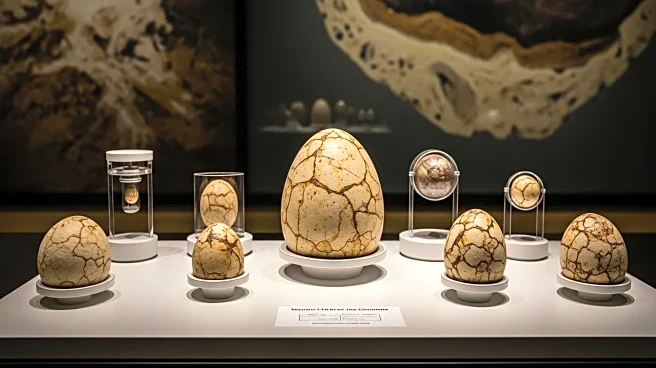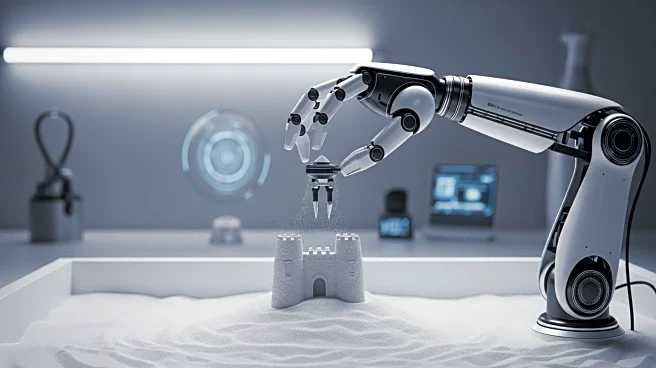What is the story about?
What's Happening?
A team of scientists has successfully dated a clutch of 28 dinosaur eggs found in the Qinglongshan fossil reserve in central China to approximately 86 million years ago. This was achieved using a method known as carbonate uranium-lead (U-Pb) dating, which is commonly used to determine the age of carbonate minerals. The technique involves analyzing the decay of uranium into lead within the mineral structure. The eggs, belonging to the species Placoolithus tumiaolingensis, were found to be well-preserved, with their original shapes largely intact. This discovery marks the first time fossils from the Qinglongshan reserve have been reliably dated, providing new insights into the adaptation of dinosaurs in the Yunyang Basin during a period of climatic cooling.
Why It's Important?
The successful application of U-Pb dating to these dinosaur eggs represents a significant advancement in paleontology, offering a more precise method for dating fossils. This could have broad implications for understanding the evolutionary history and reproductive behaviors of dinosaurs. The ability to accurately date such fossils can help scientists construct a more detailed timeline of dinosaur evolution and their responses to environmental changes. This method could potentially be applied to other fossil sites, enhancing our understanding of prehistoric life and the conditions in which these species thrived or struggled.
What's Next?
Researchers plan to apply the U-Pb dating technique to other Cretaceous sites in the region to further explore the origins and evolution of dinosaur eggs. This could lead to a better understanding of the nesting habits and environmental adaptations of dinosaurs. With over 200 dinosaur egg sites worldwide, the method could become a valuable tool for establishing a chronological framework for studying dinosaur reproduction and behavior. The findings may also prompt further research into the ecological and evolutionary implications of porous eggshells in dinosaurs.
Beyond the Headlines
The use of U-Pb dating in paleontology could revolutionize the field by providing a more accurate dating method for fossils, which traditionally relied on the dating of surrounding sediments. This advancement may lead to new discoveries about the interactions between dinosaurs and their environments, as well as their evolutionary adaptations. The study also highlights the importance of interdisciplinary collaboration, as the idea to use this dating method emerged from discussions with researchers specializing in stalagmite chronology.
AI Generated Content
Do you find this article useful?














